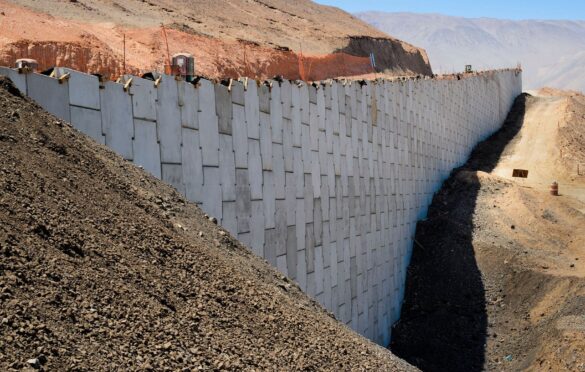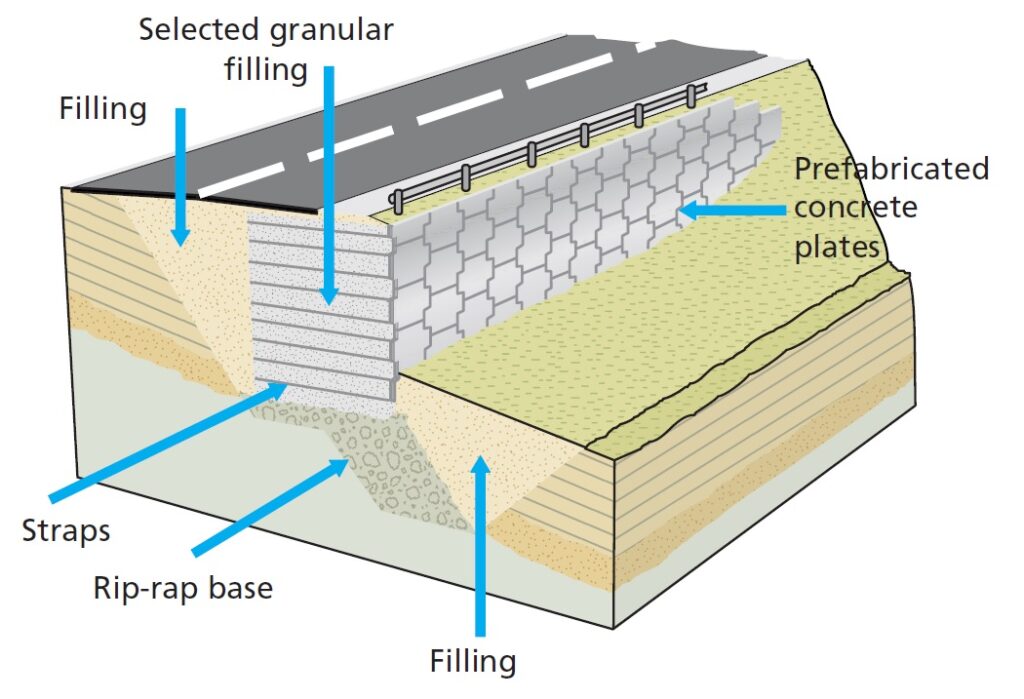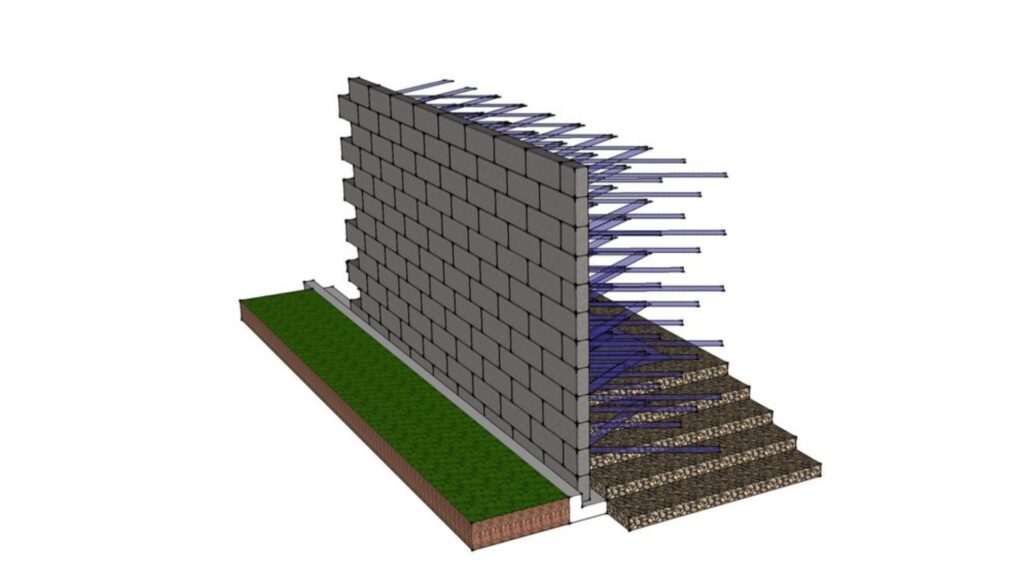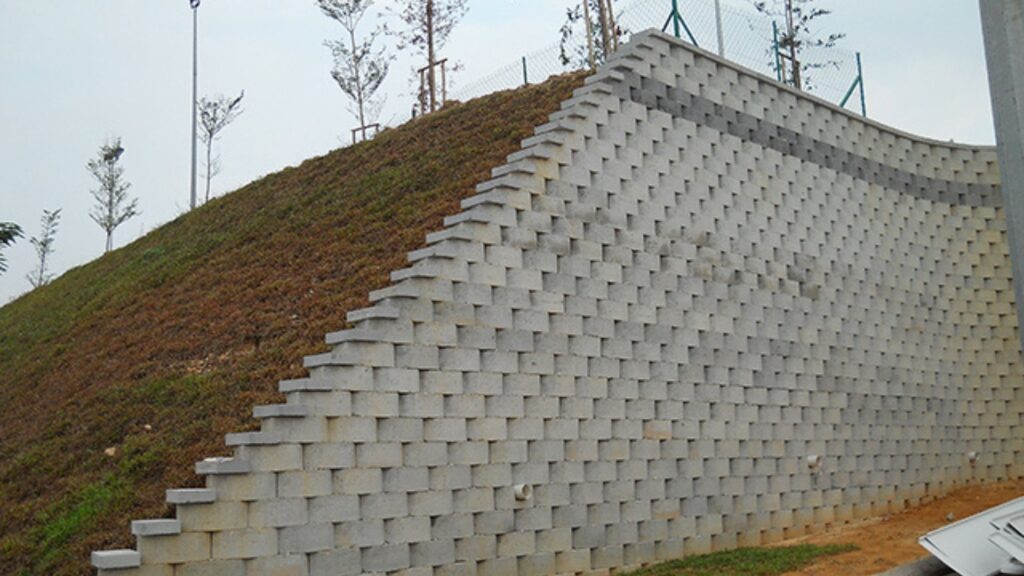What is a Reinforced Earth Wall?

Introduction
In the realm of civil engineering and construction, innovative solutions are constantly sought to meet the growing demands of modern infrastructure projects. Among these solutions, the reinforced earth wall stands out as an exceptional engineering marvel. This article delves deep into the concept of reinforced earth walls, their benefits, applications, and the underlying principles that make them a reliable and sustainable choice in the world of construction.
Understanding Reinforced Earth Walls
Unveiling the Concept
Reinforced earth walls, also known as Mechanically Stabilized Earth (MSE) walls, are a sophisticated technique that combines the strength of soil and the durability of engineered materials to create stable and aesthetically pleasing structures. These walls are designed to resist various types of loads, including lateral pressure from soil and surcharges from adjacent structures.

The Components
At its core, a reinforced earth wall comprises three fundamental components: the backfill soil, the reinforcement elements, and the facing system. The backfill soil, usually a granular material, provides the necessary resistance to loads. Reinforcement elements, such as geosynthetic materials or metallic strips, impart additional strength to the soil. The facing system not only enhances the visual appeal but also offers protection against weathering.
Benefits of Reinforced Earth Walls
Unparalleled Stability
One of the most remarkable advantages of reinforced earth walls is their exceptional stability. By integrating reinforcement elements into the soil, these walls can withstand significant pressures and remain structurally sound over time. This stability is especially crucial in scenarios where natural terrain is uneven or where retaining structures are required.
Flexibility and Adaptability
Reinforced earth walls offer a high degree of flexibility in design. They can be adapted to various site conditions and structural requirements. This adaptability makes them suitable for diverse applications, from highway construction to waterfront development.
Cost-effectiveness
In the world of construction, cost-effectiveness is a paramount concern. Reinforced earth walls shine in this aspect, as they often require fewer materials and labor compared to traditional methods. The simplicity of construction and the reduced need for heavy machinery contribute to substantial cost savings.
Environmental Sustainability
Sustainability is a cornerstone of modern construction practices. Reinforced earth walls align with this ethos by utilizing locally available materials and reducing the carbon footprint associated with construction. Their long lifespan and minimal maintenance needs further enhance their eco-friendly profile.

Applications of Reinforced Earth Walls
Highway Infrastructure
Reinforced earth walls find extensive use in highway projects. They provide vital support for roadways, ensuring stability on sloped terrains and preventing erosion. Additionally, their ability to accommodate differential settlement makes them ideal for regions prone to seismic activity.

Retaining Walls in Urban Spaces
In urban environments, space optimization is crucial. Reinforced earth walls enable the construction of space-efficient retaining walls that support adjacent structures without encroaching on valuable real estate. Their aesthetic versatility also allows for seamless integration with the urban landscape.

Coastal Protection
Coastal regions are exposed to the relentless forces of nature. Reinforced earth walls serve as effective barriers against erosion and flooding, safeguarding coastal communities and infrastructure. Their resilience in saltwater environments adds to their appeal for such applications.
The Science Behind Reinforced Earth Walls
Mechanisms of Reinforcement
The success of reinforced earth walls hinges on the principles of soil mechanics and structural engineering. The reinforcement elements, strategically placed within the backfill soil, increase its shear strength and resistance to lateral pressures. This interaction results in a cohesive and stable structure.
Internal Friction and Load Distribution
The arrangement of reinforcement elements contributes to the distribution of loads within the wall. As the soil experiences external forces, the friction between soil particles and reinforcement mitigates excessive movement. This internal friction, coupled with load distribution, ensures the wall’s longevity.
Frequently Asked Questions (FAQs):
How long do reinforced earth walls typically last?
Reinforced earth walls, when designed and constructed appropriately, can last for several decades. Proper drainage and routine inspection can extend their lifespan even further.
Can reinforced earth walls be used in seismic regions?
Yes, reinforced earth walls can be designed to withstand seismic forces. Their inherent flexibility and ability to accommodate differential settlement make them suitable for regions prone to earthquakes.
Are reinforced earth walls visually customizable?
Absolutely. The facing system of reinforced earth walls can be tailored to match the desired aesthetics of the project. This customization ensures that the walls seamlessly blend with the surrounding environment.
Conclusion
In the ever-evolving world of construction, reinforced earth walls stand as a testament to human ingenuity and engineering prowess. From their stability and adaptability to their environmental friendliness, these walls offer a multitude of benefits that make them a compelling choice for various applications. As we continue to push the boundaries of innovation, reinforced earth walls are sure to play an integral role in shaping the landscapes of tomorrow, where strength meets sustainability in perfect harmony.
